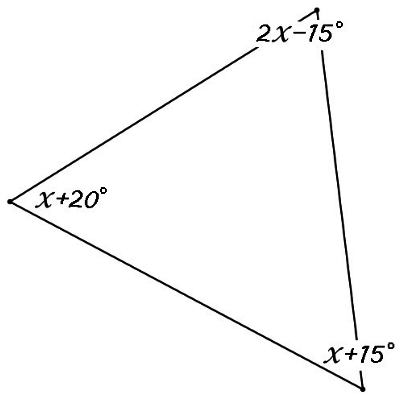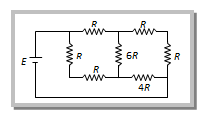4th Grade > Mathematics
FINDING PATTERNS MCQs
:
A
In the given pattern A = Z ; B = Y ; C = X ; D = W
∴ CAB = XZY
:
D
The given sequence is 3, 15, 75, 375…
Let us divide each term in the above sequence by the term preceding it:
15÷3=5
75÷15=5
375÷75=5
We observe that each term in the sequece is 5 times the term preceding it.
So, the next term in the geometric sequence = 375×5=1875
:
A
The given sequence is 10, 100, 1000, 10000, 100000 …
Here in the above sequence, we observe that each term is 10 times the previous term.
So the sequence is a geometric sequence.
:
B
The given sequence is 6, 10, 14, 18…
Let us calculate the difference between two consecutive terms:
10 - 6 = 4
14 - 10 = 4
18 - 14 = 4
We observe that the difference between two consecutive terms is 4 and each term is 4 more than the term preceding it.
So, the 8th term of the sequence = 6 + (8 - 1)×4 = 6 + 7×4 = 6 + 28 = 34
:
B
Patterns are there all around us and is a very important form in nature.

:
A
In the above pattern, a horizontal rectangle(purple in colour) is followed by a vertical rectangle(purple in colour), followed by a vertical rectangle(yellow in colour).
So, the next two figures in the above pattern will be a horizontal rectangle(purple in colour) followed by a vertical rectangle(purple in colour).
:
C
The given pattern is ACT,BDT,CET,DFT…..
We can split the sequence into three:
The sequence of the first alphabets: A, B, C, D, ...
The next term in the above sequence is E.
The sequence of the second alphabets: C, D, E, F, ..
The next term in the above sequence is G.
The sequence of the third alphabets: T, T, T, T, ..
The third letter in all the terms is T. So, the next term in the above sequence is T.
On combining the terms from the three sequences, the next term of the pattern is EGT.
So, the pattern is ACT, BDT, CET, DFT, EGT.
:
D
The given sequence is 9,12,15,18….
Now,
3×3=9
3×4=12
3×5=15
3×6=18
We observe that each term in the sequence is a multiple of 3.
The above sequence has both odd and even numbers so it is neither an odd number pattern nor an even number pattern.
Also, none of the terms is a prime number, so it is not a prime number sequence.
Hence, the given sequence of numbers is a composite number pattern.
:
C
The sequence follows: 6, 11, 16, 21
Starting from the left
6 = ( 5 × 1 ) + 1
11 = ( 5 × 2 ) + 1
16 = ( 5 × 3 ) + 1
21 = ( 5 × 4 ) + 1
Each term is one more than the the corresponding multiple of 5.
So, the next term will be
( 5 × 5 ) + 1 = 26


























